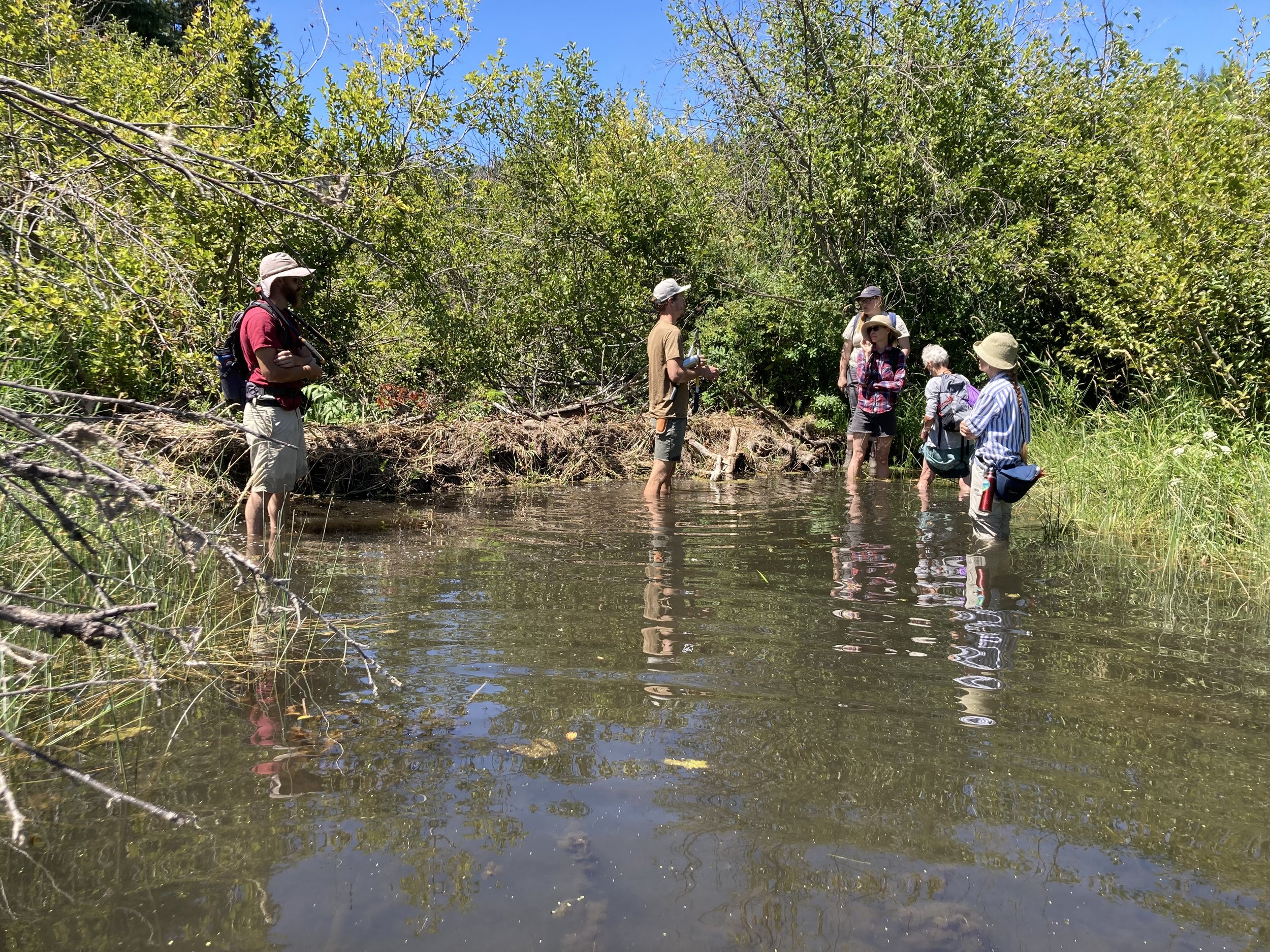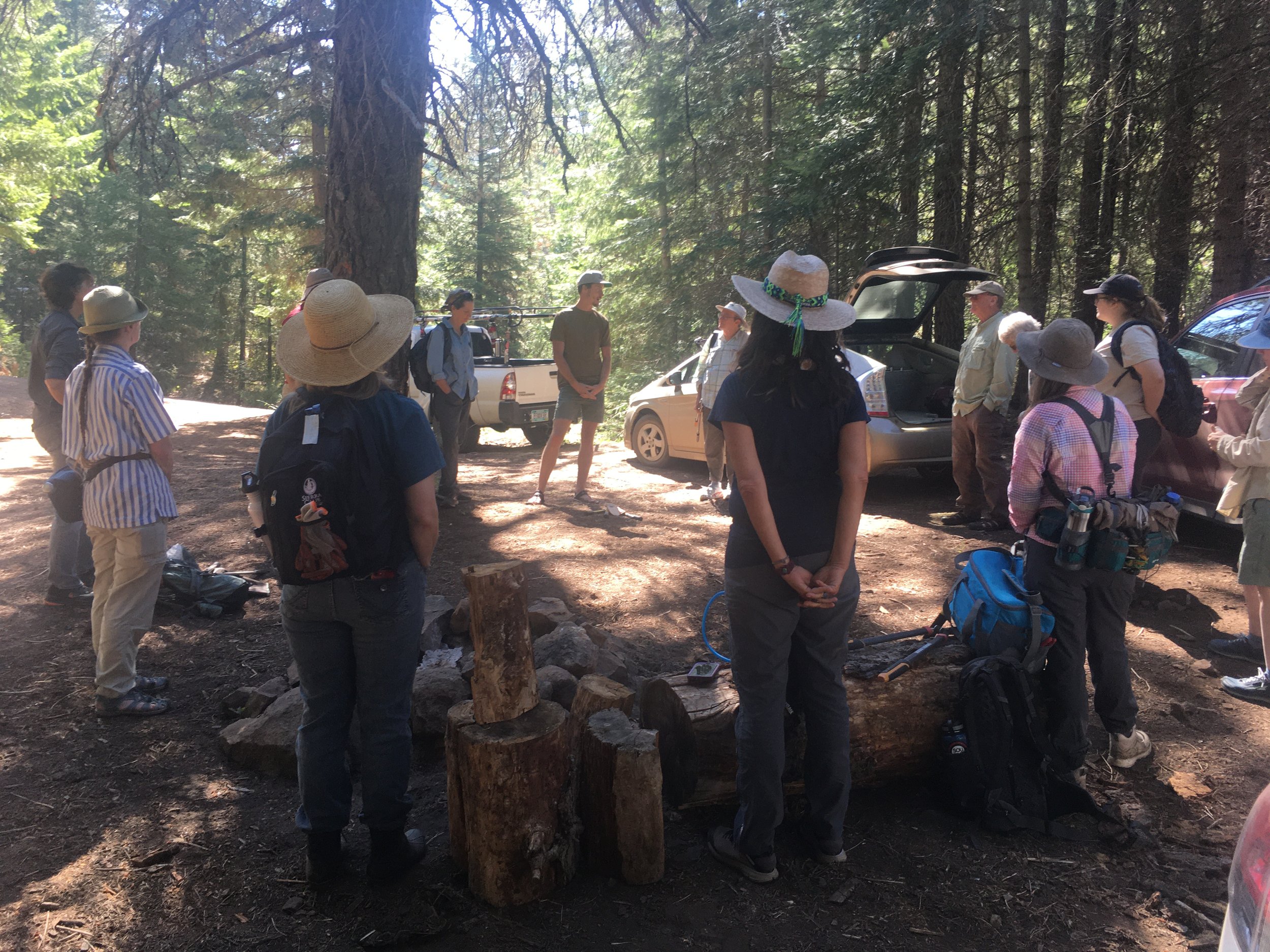As a resident of Oregon, I had always taken beavers for granted. Oregon is the “Beaver State” after all. I thought they were like elk or black bears, present in the Monument but secretive. So it was to my surprise when, at the Beavers in the Monument Friday Night Talk, I learned that there are only two known populations in the entire 114,000 acre Cascade-Siskiyou National Monument. This fact on its own is shocking. However, as Jakob Shockey, Executive Director of Project Beaver and leader of July’s Hike and Learn, explained their historic prevalence on the landscape, their absence became even more disquieting.
Beavers were once the engineers of much of our landscapes in the Northern Hemisphere. They dammed streams and rivers to create wetlands areas where they were protected from predators and their foods of choice (willow, aquatic plants, etc.) grew abundantly. But it wasn’t only the beavers benefitting. Through thousands of years of coevolution, entire ecosystems grew reliant on these riparian areas. Yet that all changed with the arrival of the European colonists to North America. It didn’t take long for economic demand for beaver pelts to result in unmitigated trapping and removal of them from the environment.
Over time, without their stalwart creators maintaining them, those precious wetlands began to drain and shrink. No longer was water being spread across meadows by beaver dams. Instead, it began carving a path through the ground as it raced toward the ocean. These are the incised streams we are used to seeing today.
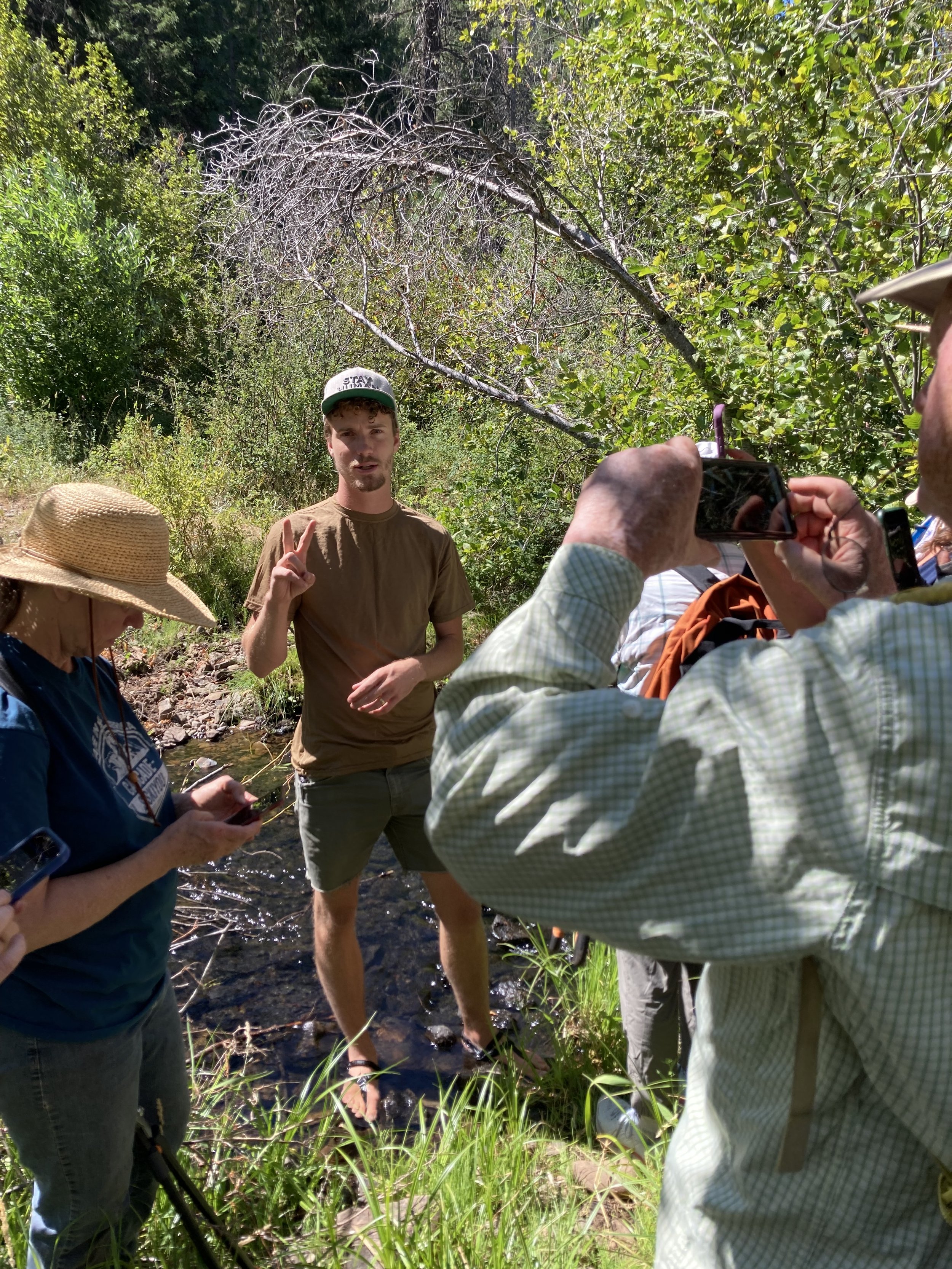
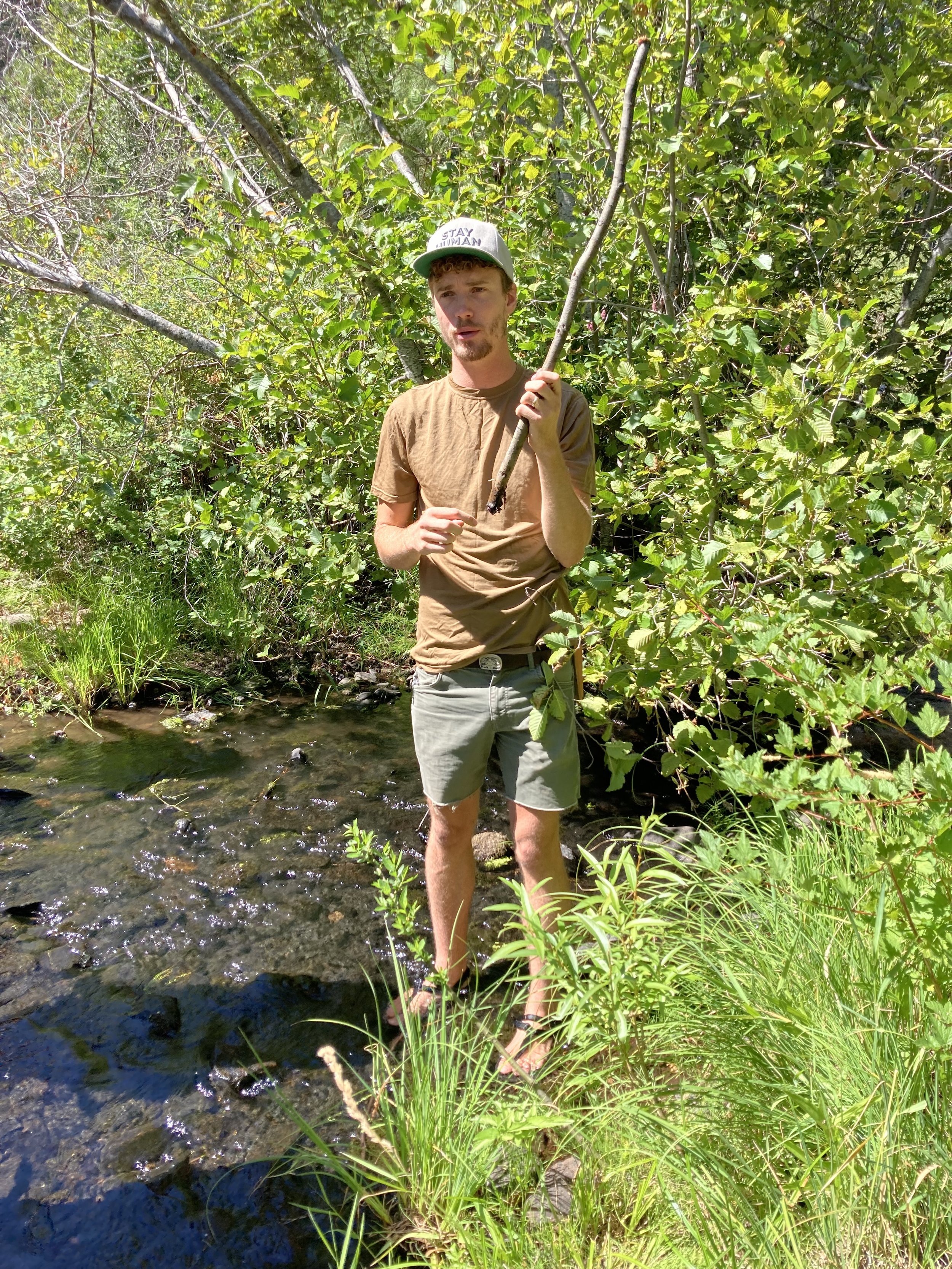

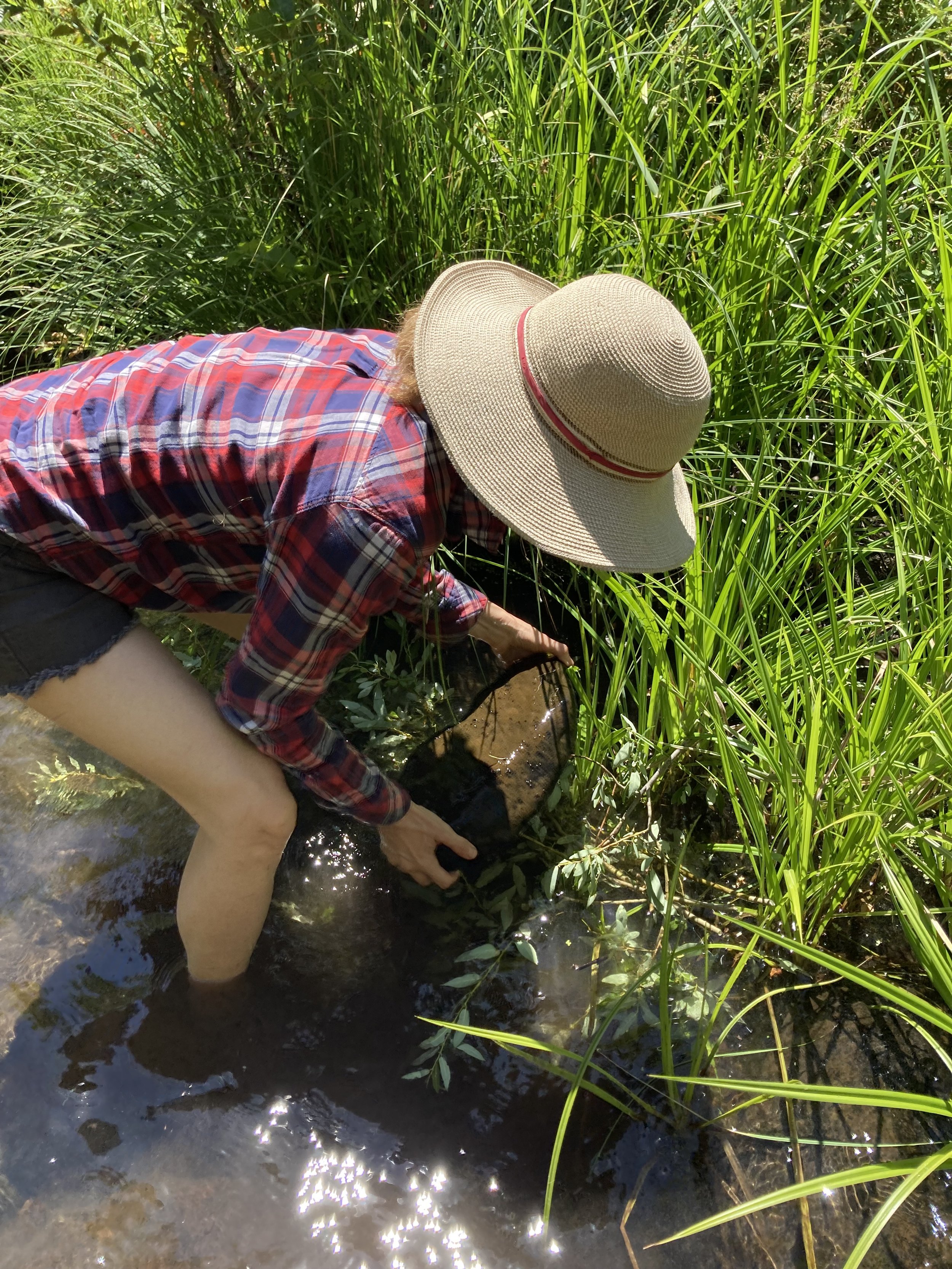
It is not a mystery that healthy riparian habitat is crucial to water quality and ecosystem resiliency. Every year, millions of dollars are poured into improving this habitat through human intervention. Jakob, however, pointed out an obvious strategy that is often overlooked: Reestablishing beavers. Not only do beavers work for free, they also do a better job at it than people ever could. While a person might check on a restoration site a couple times a year after completion, the beaver is out every single day caulking holes, digging canals, and moving vegetation. Juvenile fish find protection in their wetlands and adults are not stymied by their dams. As the saying goes “Beavers taught salmon to jump!”
While reintroducing beavers might seem like a perfect solution, humans have long had a complicated relationship with these aquatic mammals, one that has been fraught with misunderstandings. It seemed that every person in attendance on Friday had a question or myth about beavers that they wanted debunked. In fact, the law itself in Oregon perpetuated one of these myths by categorizing beavers as predators until only recently with the passage of Representative Pam Marsh’s Beaver Believer Bill. The new law, once signed by Governor Kotek, will categorize them as furbearers, with the same protection as racoons or foxes.
After stressing the importance of beavers and their precarious position, Jakob introduced Project Beaver’s new partnership with the Cascade-Siskiyou National Monument. Working with Bureau of Land Management (BLM) and area ecologists, Project Beaver mapped the waterways of the Monument and determined areas of “high intrinsic potential habitat” for beavers. This is where the Friends of the Cascade-Siskiyou National Monument and volunteers come in. At the end of the Friday lecture, after we were all fully convinced of the essential function of beavers, Jakob introduced a new initiative to survey and monitor the waterways using citizen science.
On Saturday morning, a group of enthusiastic volunteers came armed with two new apps: Avenza (with a map of potential beaver habitat) and ArcGIS Survey123. Once we were done with the obligatory tech support, we took a convoy up to Friedenberg Springs. Friedenberg Springs is a special area in the Cascade-Siskiyou National Monument where Jenny Creek flows through what was a historic beaver meadow. It is also the site of many Beaver Dam Analogues (BDAs) installed last fall by Project Beaver and the BLM. Our expedition that day had two goals: To learn how to collect and report data using the Survey123 form and to check on the potential presence of beavers.

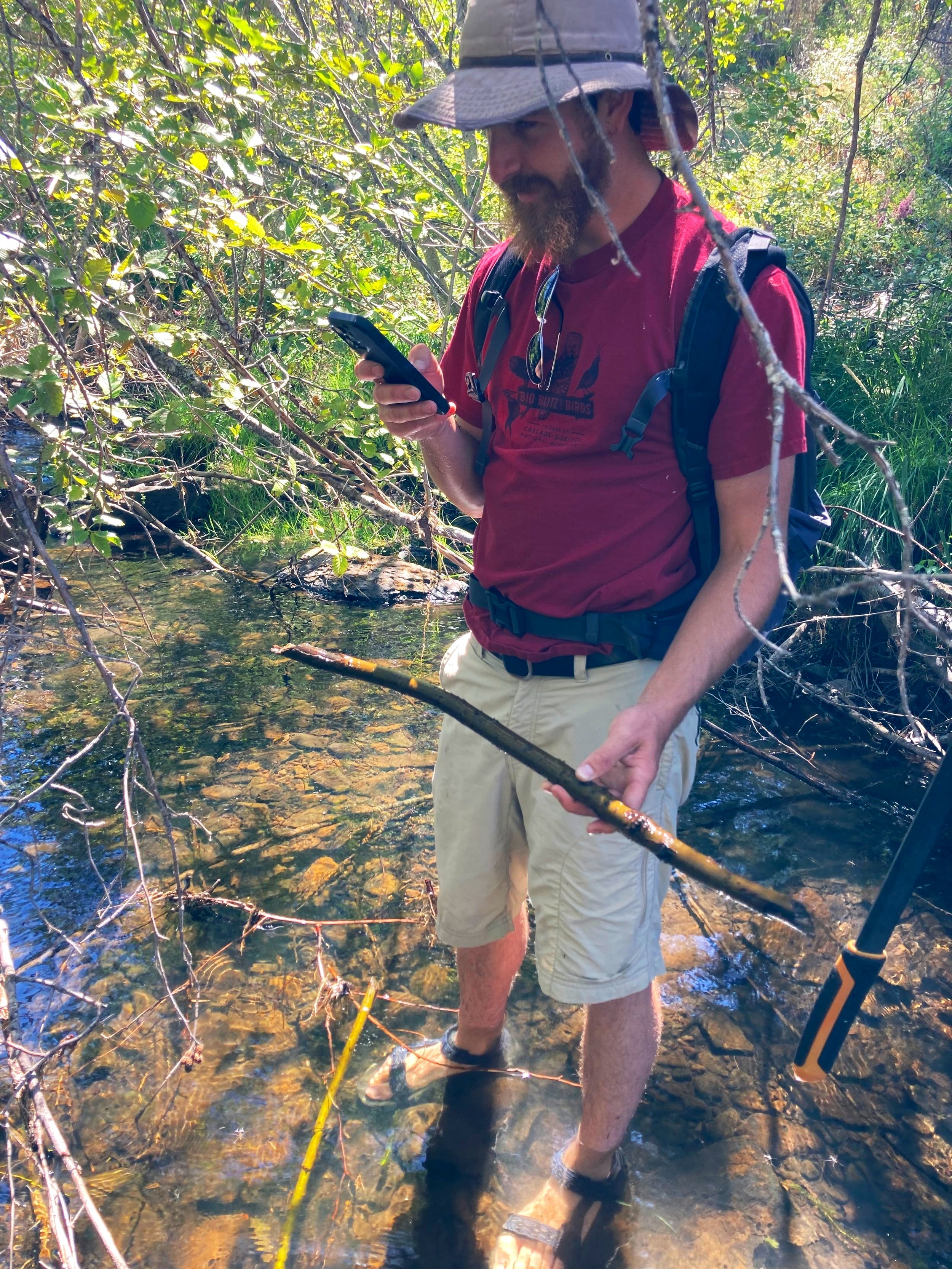
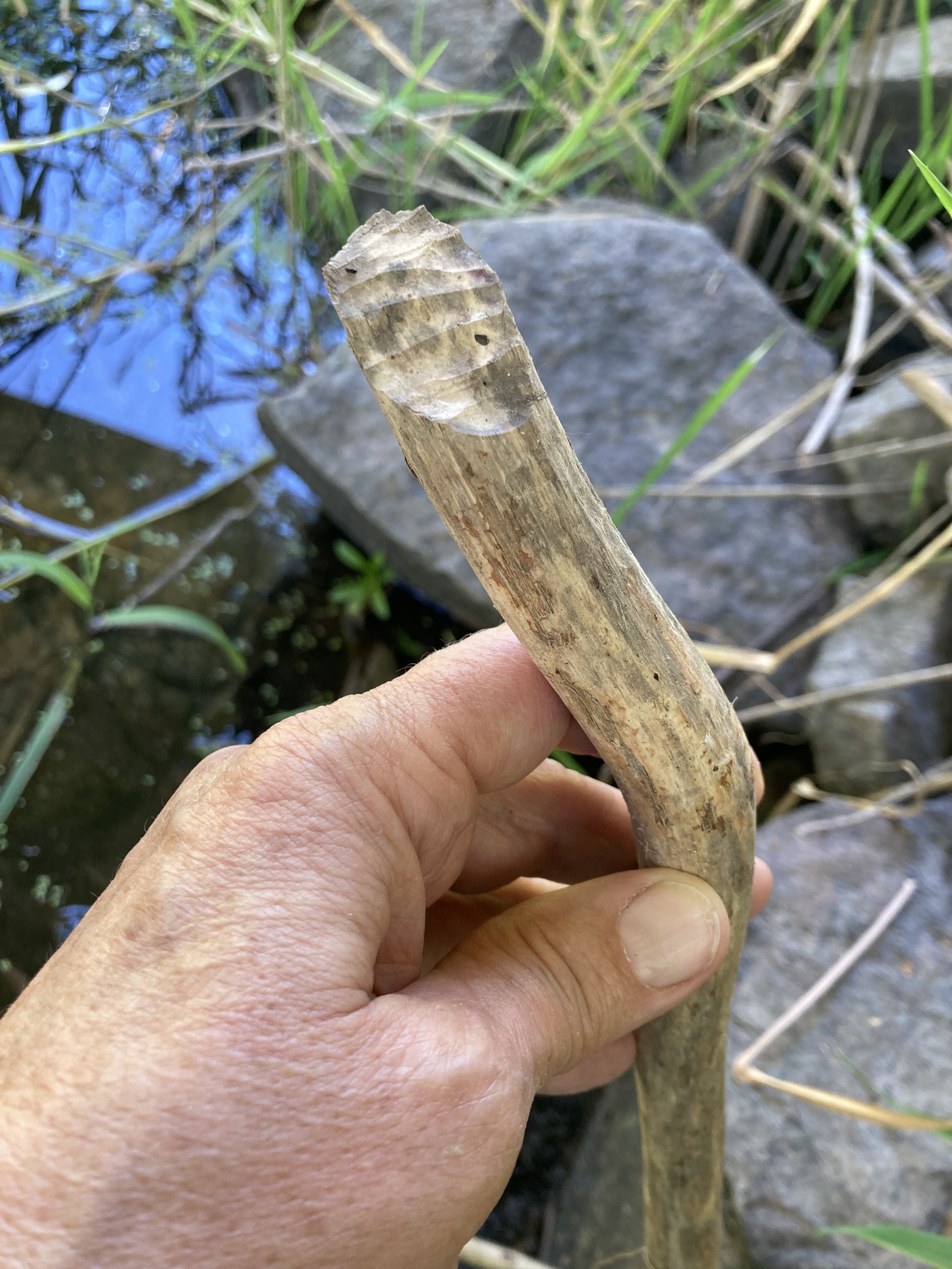

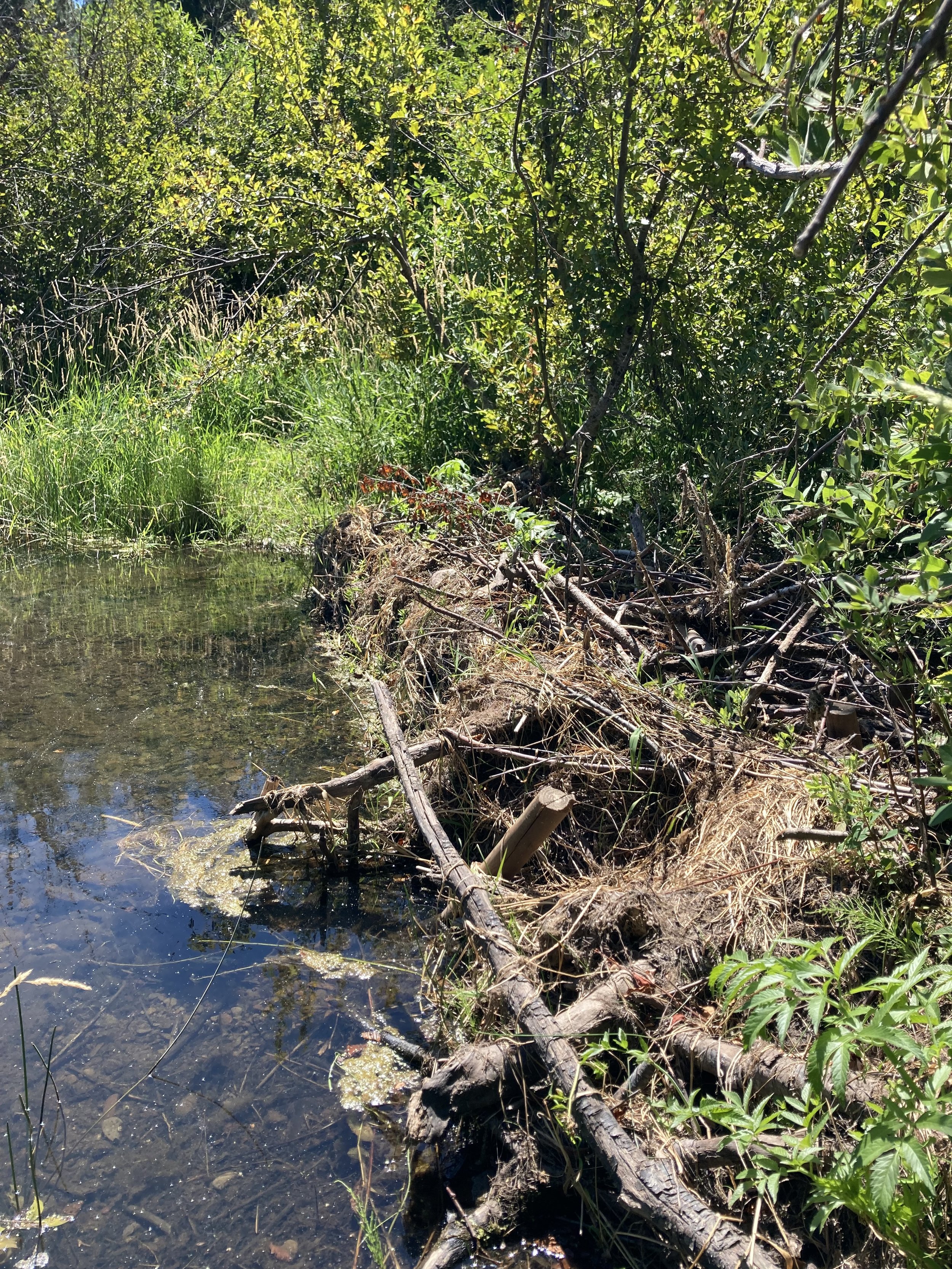
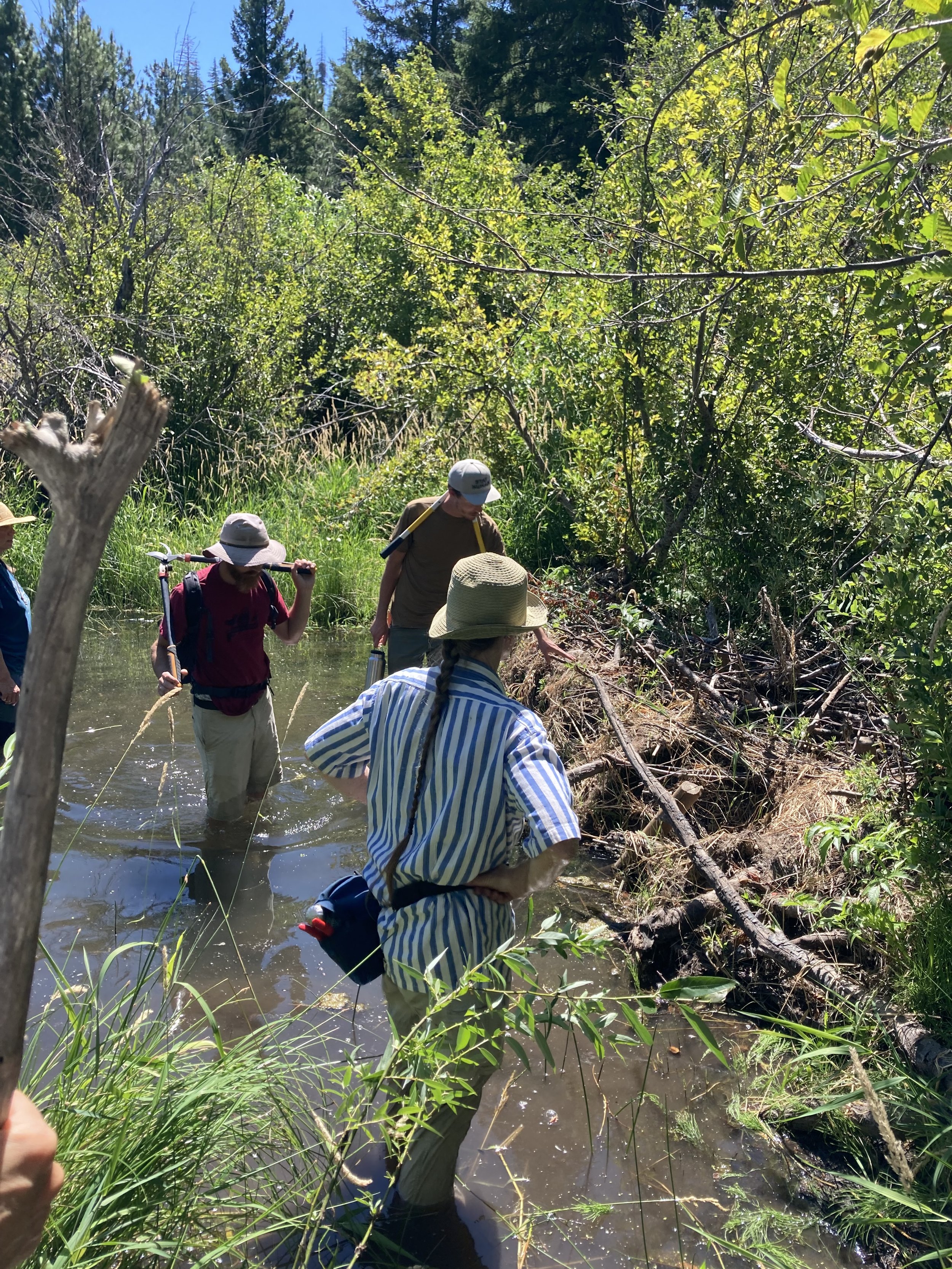
As we waded down into the creek –blissfully cool on that hot July day– we stood amongst the willows as Jakob showed us how to identify beaver sticks. What for many people would look like an unassuming stick resting on the creek bed took on new meaning as we noticed the scraped lines of a beaver’s teeth on the ends and the patches of stripped bark and cambium. There was noticeable excitement amongst the group as we realized we may be in the vicinity of these elusive rodents.
Splitting up into small groups, we journeyed down the creek. Along our way we used loppers and hand pruners to cut down willows and plant their stakes along the bank so they could propagate and provide further food and habitat. Like finding easter eggs, we exclaimed in delight as beaver sticks were found and logged in the app. The ultimate goal, however, was to find the beaver dam that Jakob had spoken about where he had confirmed beaver activity a couple months before. We had some false starts as we mistakenly identified BDAs as actual dams. But soon the density of the beaver sticks began to increase and chutes and canals became visible along the bank. We knew we were close. Then, we saw it.
Unlike the previous BDAs, this dam was covered in plant matter, additional sticks, and caulked with mud and rocks. Since the dam was originally a BDA the beavers had improved upon, you could still see the posts sticking out along the top. However, the joy was short lived as Jakob informed us that the dam was no longer being maintained since he had last been there. The beavers were gone. It is possible that the beavers simply went on a “summer vacation,” an observed phenomenon where beavers will explore other waterways during the summer months, perhaps looking for a different site to settle down. Yet a more ominous possibility hung over us; That they had been trapped.
There are no rules against trapping in the Monument, and if a person does trap a beaver they do not have to report that they did. The beaver simply disappears. This poses a serious challenge to bringing them back into the landscape.
While this disappointment hung heavy in the hearts of all the staff and volunteers, it also brought a sense of urgency and enthusiasm. What other beaver populations might exist within the Monument that we don’t know about? With better monitoring, we might be able to get a more accurate idea of where beavers are moving and why. Even as we sat down for lunch after removing our wet shoes, the air was thick with questions. The waterways highlighted in neon green on the map were both a mystery and cautious reassurance. We couldn’t wait to get back out there.
Please stay tuned for volunteer opportunities for beaver monitoring and riparian restoration within the Cascade-Siskiyou National Monument. We will be announcing further dates on our website and through our newsletter.
